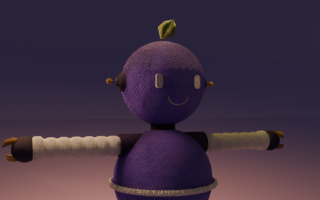Thinking about starting to design but don’t know where to start? Relax, you’re not alone! Every great designer started from zero. Let’s break down step by step how to start your journey in the world of design!
Preparation Before Designing
Determine Design Goals
First things first, you have to be clear about what you want to design for. Do you want to make a poster? Social media content? Website? Logo? Each type of design has different requirements and approaches. Define your goal, and your journey will be more focused!
Identify Target Audience
Know your audience! A good design is one that “connects” with its target audience. Teenagers will prefer a playful and colorful design, while professional audience might prefer something clean and sophisticated.
Gather References and Inspiration
Browse Pinterest, Instagram, Behance, or Dribbble for inspiration. But remember: inspiration ≠ copying! Use references as jumping-off points to develop your own style. Pro tip: create a mood board to organize your inspiration!
Fundamental Skills to Master
Basic Design Software
Start with the basics! For beginners, try user-friendly software like:
- Canva for quick designs
- Figma for UI/UX design
- GIMP or Photopea as a Photoshop alternative
- Inkscape for vector graphics
Don’t feel pressure to master professional software right away – start small, grow gradually!
Design Principles
There are some basic principles that must be understood:
- Balance: Balance in layout
- Contrast: Differences that create a focal point
- Alignment: Neat arrangement of elements
- Proximity: Grouping of related elements
- Repetition: Consistency in design
Color Theory and Typography
Colors and fonts are your best friends in design! Learn:
- Color wheel and color harmony
- Color psychology
- Font families and font pairing
- Hierarchy in typography
- Readability and legibility
Layout and Composition
Think of layout like you organize your room – everything should have its place! Learn:
- Grid systems
- Visual hierarchy
- White space usage
- Focal points
- Flow and movement
Practical Steps to Start Designing
Sketching and Brainstorming
Start with paper and pencil! Sketching is the most effective way to create:
- Explore different ideas quickly
- Plan your layout
- Experiment with compositions
- Save time before going digital
Experiment with Basic Tools
Start with basic tools like:
- Shapes tool to create basic shapes
- Text tool for typography
- Color picker to choose color
- Selection tools for element manipulation
Don’t be afraid to make mistakes – that’s how you learn!
Implementing the Grid System
Grid is the foundation for a solid layout:
- Start with simple grids
- Understand columns and margins
- Learn about modular grids
- Practice alignment
Iteration and Revision
Design is an iterative process:
- Make multiple versions
- Try different approaches
- Get feedback
- Refine your work
Tools and Resources for Beginners
Free vs Paid Design Software
Free options:
- Canva
- Figma (free plan)
- GIMP
- Inkscape
Paid options:
- Adobe Creative Suite
- Sketch
- Affinity Designer
- CorelDRAW
Online Tutorials and Courses
Many free resources for learning:
- YouTube channels design
- Udemy courses
- Skillshare classes
- Design blogs and articles
Design assets and templates
Where to download resources:
- Freepik for vectors
- Unsplash for photos
- Google Fonts for typography
- Flaticon for icons
Community and Forum Design
Join the community to grow:
- Behance
- Dribbble
- Design forums
- Local design communities
Tips for Developing Design Skills
Practice Projects for Beginners
Start with simple projects:
- Personal logo
- Social media posts
- Business cards
- Simple posters
- Redesign existing designs
Building a Portfolio
Document your journey:
- Keep all your works
- Show your process
- Include case studies
- Update regularly
Feedback and Evaluation
Grow through feedback:
- Share your work
- Ask for critiques
- Learn from comments
- Apply suggestions
The Right Learning Path
Create your roadmap:
- Set realistic goals
- Track your progress
- Focus on one skill at a time
- Celebrate small wins
Starting out in the design world can be overwhelming at first, but remember: every expert was once a beginner! Focus on building a strong foundation, practice regularly, and don’t be afraid to make mistakes. Your design journey is unique to you – take it one step at a time!
Frequently Asked Questions
Q: How long does it take to get good at design?
A: It varies! But with consistent practice, within 3-6 months you can create decent designs. Remember: it’s not a race, it’s a journey!
Q: Tips to fight art block when designing?
A: Take breaks, look for fresh inspiration, start with sketches, or try new techniques. Sometimes, stepping away from the project for a while can bring fresh perspective!
Q: What software is better to start with for beginners?
A: Canva is a great starting point because it’s user-friendly. Once you are familiar with the basic principles, you can move to Figma or other professional software.
Q: Do you need an expensive design course to become a designer?
A: Not necessarily! There are many quality free resources on the internet. The important thing is consistency of learning and practice.
Q: How to define your own design style?
A: Experiment with various styles, observe what resonates with you, and gradually develop your unique style through practice and exploration.


